Softwoods
Softwoods are timber of coniferous species (Gymnospermae), characterised by features that make it possible to distinguish them from hardwoods. It is especially marked difference between the light earlywood and the dark latewood. That is the reason the annual rings borders are quite distinct. Rays are not visible to the naked eye. Pores are not present. In some species the resin canals are present.
SCOTCH PINE
Latin name: Pinus sylvestris L.
Czech name: Borovice lesní
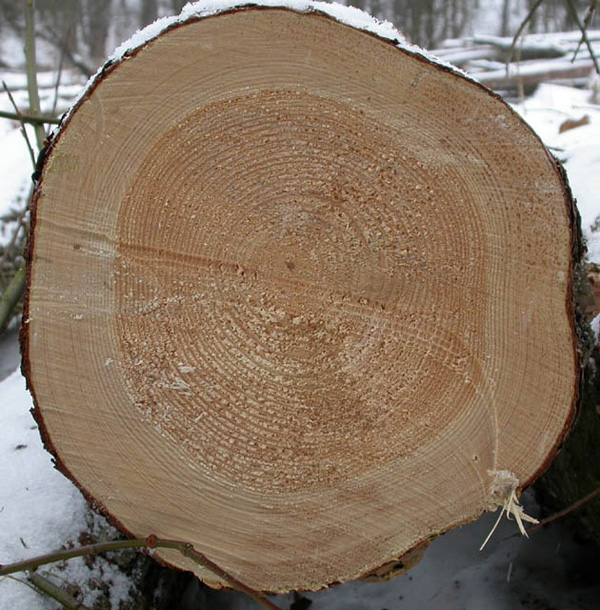
Appearance on the surfaces:
| Group of timbers: | Softwoods |
| Resin canals: | Present Quite good visibility on the transverse surface and on the longitudinal surfaces. Much better visibility compared to spruce or larch. |
| Transition from earlywood to latewood: | Abrupt |
| Heartwood: | Present |
| Colour: | Sapwood yellowish, heartwood reddish-brown; latter it is getting dark with exposure |
| Hardness and weight: | Soft and light, occasionally medium hard and medium heavy |
| Another features: | The sapwood is quite wide. In freshly cut tree the heartwood is usually less distinct. Annual rings borders well visible. Freshly cut timber smells of resins. Wood appearance quite variable, depending especially on a site. |
| Features of interest: | Sapwood is susceptible to sap stain. Occurrence of resinosis is also possible. |
AUSTRIAN PINE, EUROPEAN BLACK PINE
Latin name: Pinus nigra ARNOLD
Czech name: Borovice černá

Appearance on the surfaces:
| Group of timbers: | Softwoods |
| Resin canals: | Present Quite good visibility on the transverse surface and on the longitudinal surfaces. At least as good visibility as in the case of Scotch pine. |
| Transition from earlywood to latewood: | Abrupt |
| Heartwood: | Present |
| Colour: | Sapwood yellowish, heartwood reddish-brown; similar to Scotch pine |
| Hardness and weight: | Soft and light, occasionally medium hard and medium heavy |
| Another features: | Sapwood usually wider compared to Scotch pine. Annual rings borders well visible. |
| Features of interest: | Sapwood is susceptible to sap stain at least the same way as Scotch pine. More resinous compared to Scotch pine. |
DOUGLAS FIR
Latin name: Pseudotsuga menziesii (Mirbel) Franco
Czech name: Douglaska
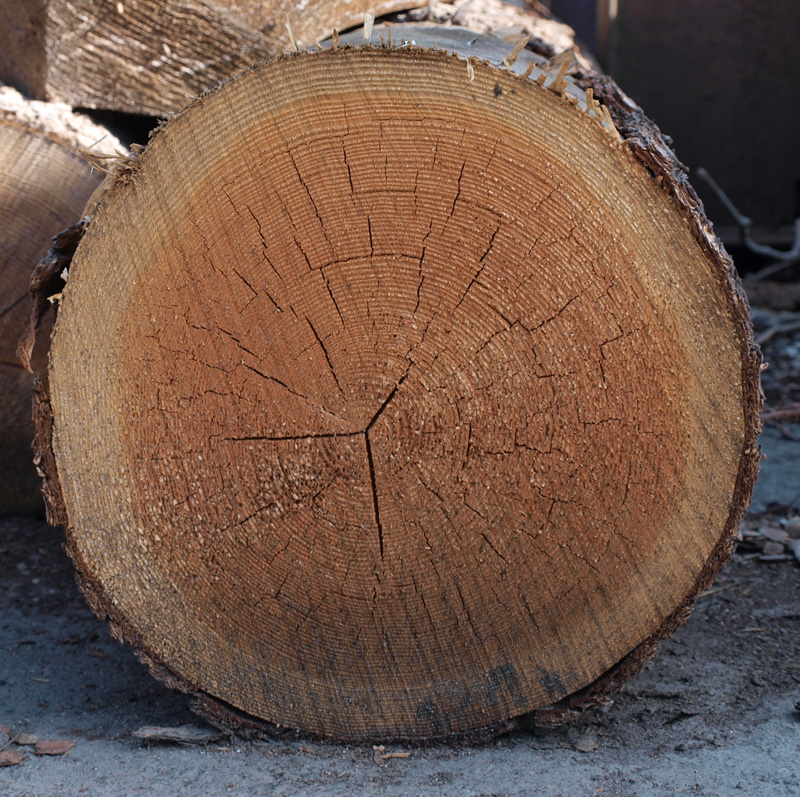
Appearance on the surfaces:
| Group of timbers: | Softwoods |
| Resin canals: | Present Poor visibility, mostly on the longitudinal surfaces. |
| Transition from earlywood to latewood: | Very abrupt |
| Heartwood: | Present |
| Colour: | Sapwood yellowish, heartwood orange-brown or yellowish brown; latter it is getting dark with exposure to reddish brown, resembling so larch |
| Hardness and weight: | Moderately hard and heavy |
| Another features: | Very distinct annual rings. Sapwood is usually narrower compared to Scotch pine, but often wider compared to larch. |
| Features of interest: | Compared to the native conifers it is fast growing species with usually wide annual rings and with the quite broad zone of the latewood. |
JUNIPER
Latin name: Juniperus communis L. (or J. virginiana a J. chinensis)
Czech name: Jalovec

Appearance on the surfaces:
| Group of timbers: | Softwoods |
| Resin canals: | Absent |
| Transition from earlywood to latewood: | Gradual This feature is difficult to evaluate as the zone of the latewood is narrow. |
| Heartwood: | Present |
| Colour: | Sapwood yellowish to pinkish; heartwood reddish brown to purplish brown |
| Hardness and weight: | soft, light to medium heavy |
| Another features: | Sapwood narrow, heartwood quite wide. Annual rings borders well visible. Often undulated annual rings (as visible on the transverse surface). |
| Features of interest: | Characteristic fragrant odour. Small knots provide interesting figure. |
FIR
Latin name: Abies alba Mill.
Czech name: Jedle
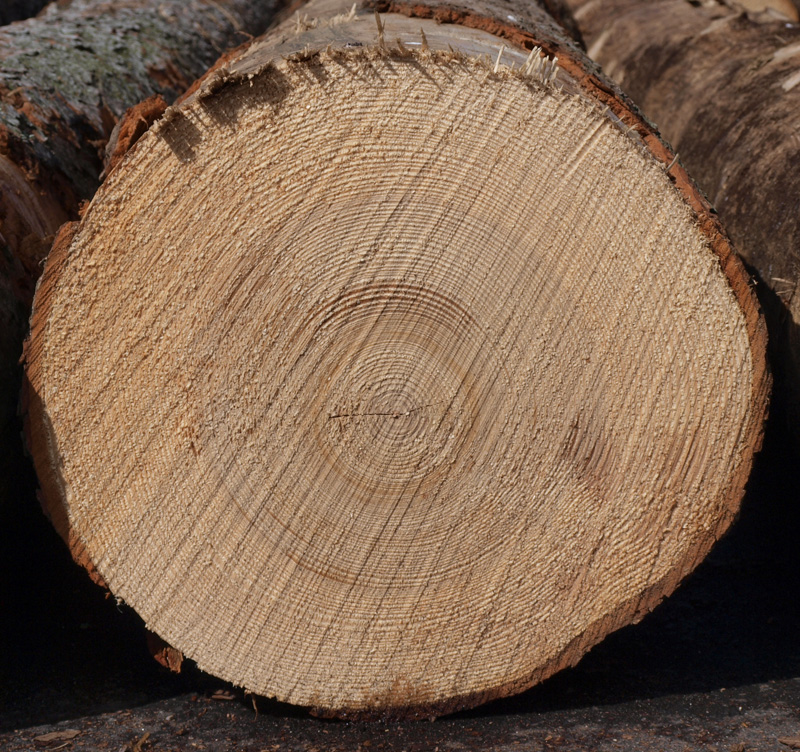
Appearance on the surfaces:
LARCH
Latin name: Larix decidua Mill.
Czech name: Modřín
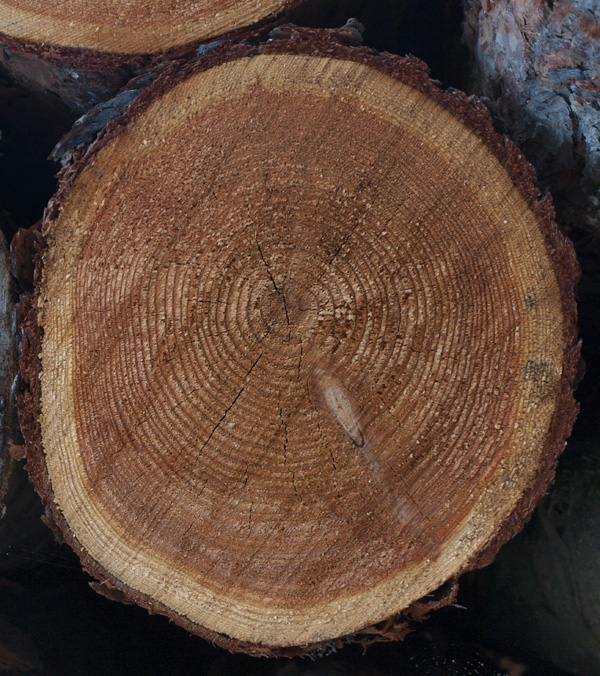
Appearance on the surfaces:
| Group of timbers: | Softwoods |
| Resin canals: | Present Indistinct to the naked eye on the transverse surface, even worse visibility compared to spruce; mostly visible only on the longitudinal surfaces. |
| Transition from earlywood to latewood: | Very abrupt |
| Heartwood: | Present |
| Colour: | Sapwood yellowish, Heartwood dark reddish brown |
| Hardness and weight: | Moderately hard and heavy |
| Another features: | Sapwood very narrow, heartwood quite wide, compared to pine. Odour is not very distinct. Annual rings borders well visible. |
| Features of interest: | - |
SPRUCE
Latin name: Picea abies (L.) Karsten
Czech name: Smrk
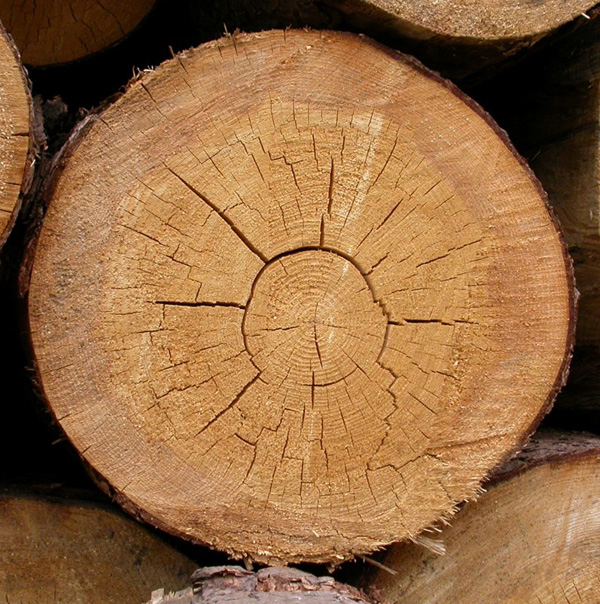
Appearance on the surfaces:
| Group of timbers: | Softwoods |
| Resin canals: | Present Poor visibility to the naked eye on the transverse surface, mostly visible on the longitudinal surfaces as short lines, sometimes on the transverse surface as small light dots in the latewood. Occurrence of the resin pockets is one of the evidence of the resin canals presence. |
| Transition from earlywood to latewood: | Gradual |
| Heartwood: | Absent |
| Colour: | Whitish to yellowish; latter it is getting dark with exposure |
| Hardness and weight: | Soft and light |
| Another features: | Annual rings borders well visible. Timber is lustrous. Freshly cut wood has resinous odour. |
| Features of interest: | Timber with regular annual rings distribution is used as the resonance wood for production of music instruments. |
YEW
Latin name: Taxus baccata L.
Czech name: Tis

Appearance on the surfaces:
| Group of timbers: | Softwoods |
| Resin canals: | Absent |
| Transition from earlywood to latewood: | Gradual This feature is difficult to evaluate as the zone of the latewood is narrow. |
| Heartwood: | Present |
| Colour: | Sapwood yellowish, heartwood dark brown to dark purplish brown |
| Hardness and weight: | Hard and heavy |
| Another features: | Sapwood very narrow, heartwood wide. Annual rings borders well visible. Often undulated annual rings (as visible on the transverse surface). No characteristic odour. |
| Features of interest: | The hardest and the heaviest native softwood. It is exceeding even lots of hardwoods in this feature. Tiny knots are frequent, providing very attractive and valuable figure. |
EASTERN WHITE PINE, WEYMOUTH PINE
Latin name: Pinus strobus L.
Czech name: Vejmutovka
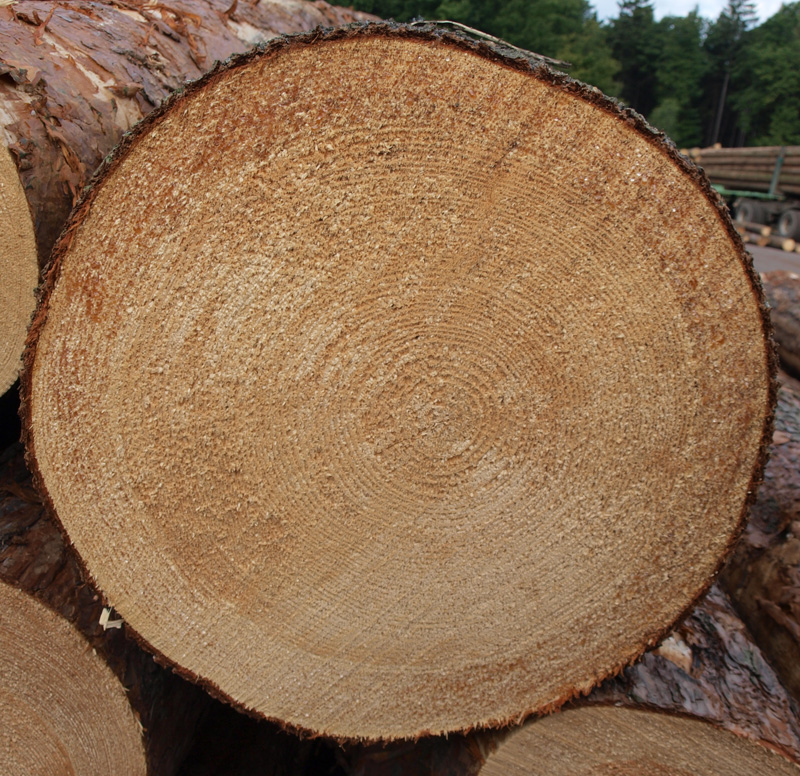
Appearance on the surfaces:
| Group of timbers: | Softwoods |
| Resin canals: | Present Well visible especially on the longitudinal surfaces. |
| Transition from earlywood to latewood: | Gradual |
| Heartwood: | Present |
| Colour: | Sapwood yellowish, heartwood yellowish-brown; it is getting dark to reddish-brown with exposure. Difference between the sapwood and the heartwood is not so striking. |
| Hardness and weight: | Very soft and light |
| Another features: | Sapwood quite wide. Annual rings borders, due to the narrow latewood zone, are not so distinct compared to other softwoods. The heartwood is not so distinct contrasted to Scotch pine. |
| Features of interest: | The sapwood is susceptible to the sap stain in a similar way as other pines. |
